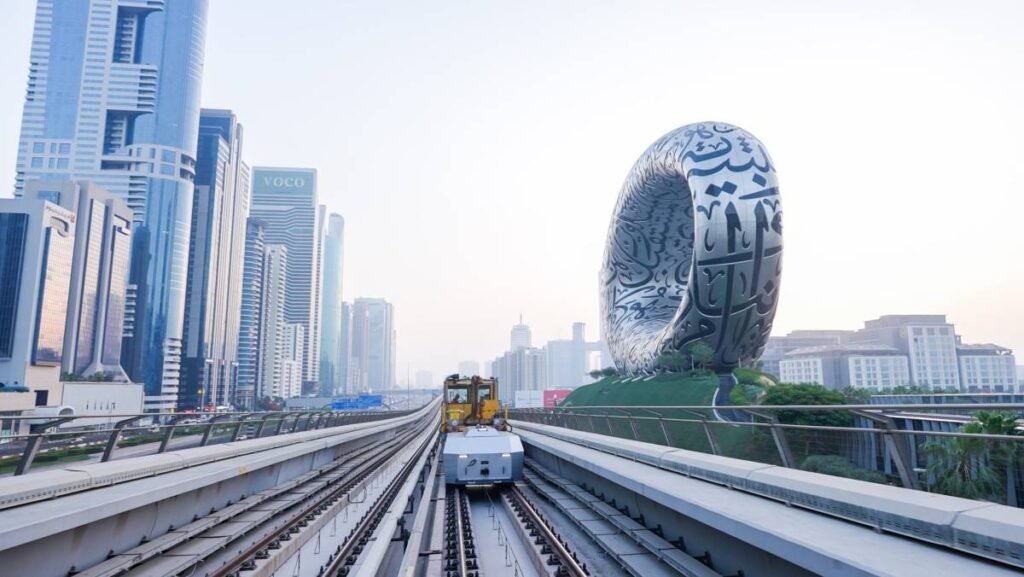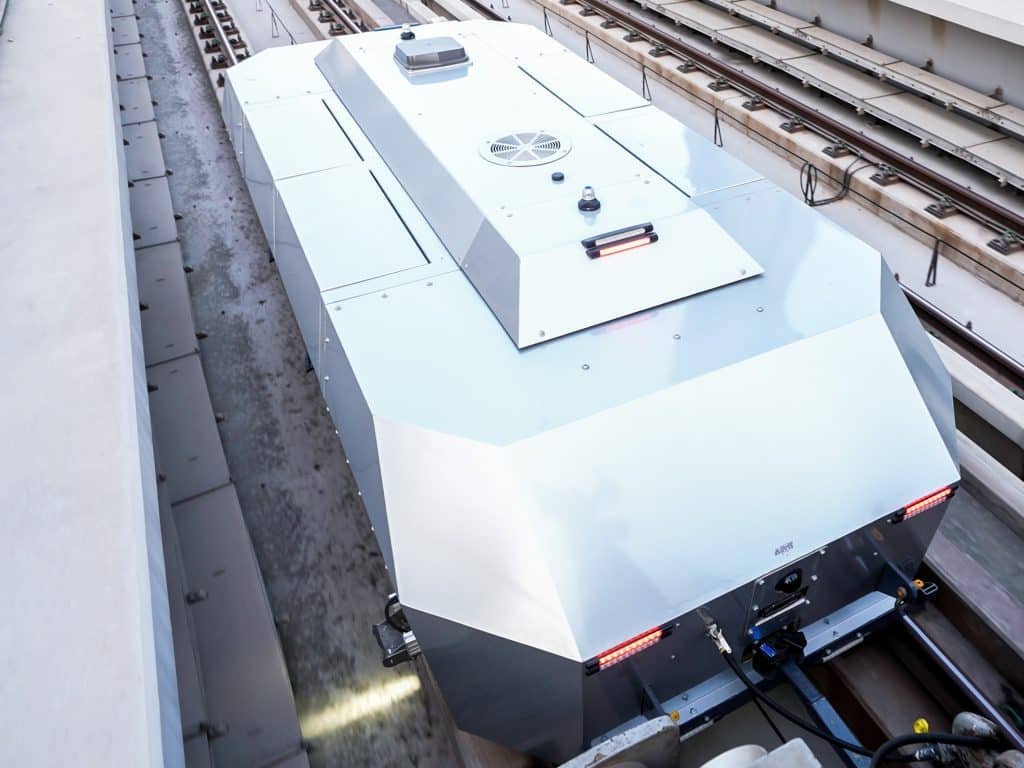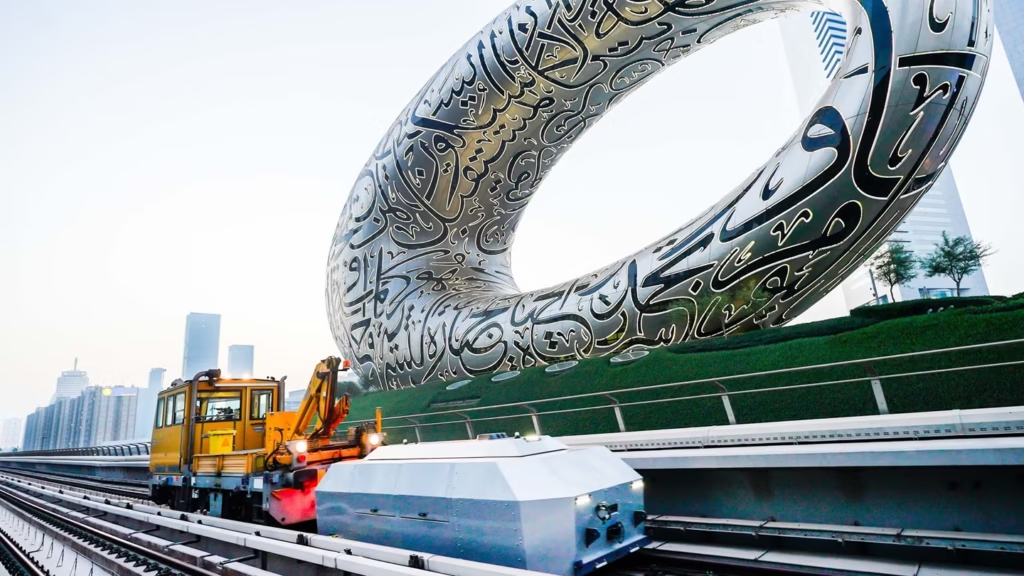Dubai continues to redefine smart mobility with the introduction of a groundbreaking AI-powered robotic inspection system for its Metro network. Designed to revolutionize maintenance, safety, and operational efficiency, this new innovation reflects Dubai’s unwavering commitment to becoming a global leader in urban transport technology.
At the heart of this development is ARIIS – an Artificial Intelligence Robotic Inspection and Imaging System. It’s not just a robot; it’s a glimpse into the future of metro infrastructure management. With the city’s public transport network expanding and ridership steadily increasing, Dubai’s transport authorities are stepping up to meet new challenges with intelligent solutions.
Redefining Rail Maintenance
Rail maintenance has traditionally been labor-intensive and time-consuming. Human inspectors would walk along tracks, carry out visual inspections, record anomalies manually, and recommend repairs. This approach, while tried and tested, leaves room for delays, errors, and oversight.

ARIIS changes the game entirely.
This autonomous robot uses high-definition cameras, thermal imaging, and laser scanning technologies to monitor rail lines and surrounding infrastructure in real-time. It identifies even the most minor anomalies, including hairline cracks, rail misalignments, and loose fittings. With machine learning built into its system, ARIIS improves over time, recognizing patterns and predicting issues before they become serious.
Most impressively, ARIIS has drastically reduced the man-hours required for inspections. What previously took nearly 2,400 hours per cycle can now be completed in just 700 hours—an extraordinary improvement that demonstrates both the effectiveness and the speed of this AI-led approach.
Safety and Reliability on a New Level
Passenger safety remains the top priority in any transit system, and Dubai Metro is taking that responsibility to the next level. The robot doesn’t just detect issues; it sends real-time alerts to maintenance teams, allowing them to respond proactively instead of reactively. This shift toward predictive maintenance ensures that infrastructure problems are dealt with before they escalate, preventing costly repairs or potential service interruptions.
This translates to a more reliable commuting experience for the millions who rely on Dubai Metro daily. Fewer service disruptions, minimal downtime, and smoother journeys all contribute to a higher standard of urban mobility.
Moreover, the AI robot is capable of functioning autonomously in high-risk environments, significantly reducing the exposure of human workers to dangerous tasks. It can operate in tunnels, during non-operational hours, and even in adverse conditions—something that human teams cannot always achieve efficiently.
Strengthening Dubai’s Smart City Credentials
Dubai has long positioned itself as a pioneer in smart infrastructure, and ARIIS is yet another jewel in that crown. The integration of AI into public transit reflects the broader smart city strategy being implemented across the emirate, where automation, data analytics, and sustainability are at the core of future development.

This robotic system aligns perfectly with Dubai’s wider ambitions to embrace intelligent technologies in government services, transportation, energy, and beyond. From autonomous taxis to AI-powered traffic control, the city is moving confidently toward a digital-first future, with public transport as a key pillar.
By deploying ARIIS, Dubai is also setting an example for other cities around the world. In the post-pandemic era, where safety, efficiency, and automation have become non-negotiable, Dubai’s proactive adoption of such systems places it far ahead in the global mobility race.
A Seamless Fit into Existing Metro Infrastructure
Currently, Dubai Metro consists of the Red and Green Lines, covering almost 90 kilometers of track and connecting over 50 stations across the city. The system is fully automated and driverless, widely regarded as one of the most advanced metro services in the world.
ARIIS has been designed to work seamlessly within this existing framework. It does not require major overhauls or disruptive infrastructure upgrades. Instead, it complements and enhances the current operational model by integrating into regular maintenance cycles.
The robot is compact, mobile, and self-navigating. It can traverse the tracks with precision, operate during off-peak hours, and carry out inspections without interfering with daily operations. This flexible design ensures that its adoption is smooth and beneficial from day one.
In the future, as Dubai prepares to open additional lines—such as the Blue Line by 2029—ARIIS and similar AI-driven systems will become foundational to ensuring consistent quality and performance across the expanding network.
Empowering Human Teams Through Technology
One of the most empowering aspects of this new system is how it supports—not replaces—human workers. While automation often sparks fear of job displacement, in this case, it is being used to elevate human potential. Maintenance staff now receive more precise data, enabling them to make better-informed decisions. Instead of spending hours on routine checks, teams can focus on problem-solving and high-priority tasks.
This dynamic creates a stronger synergy between man and machine. ARIIS handles the repetitive, high-risk work, while skilled personnel apply their expertise where it matters most. As a result, productivity increases, safety improves, and job satisfaction rises.
The system is also expected to foster the development of new roles in data analysis, robotic maintenance, and AI system management—further broadening career opportunities within the transportation sector.
Future Horizons and Expansion Potential
Although ARIIS is currently focused on rail track inspections, the long-term vision for this technology is far more expansive. Plans are already underway to explore its application across other components of the transport system, including tram lines and even bus depots.
There’s potential for ARIIS to be equipped with additional sensors that detect environmental conditions, noise levels, and structural stress—turning it into a mobile monitoring hub for Dubai’s entire transit ecosystem.
Moreover, when integrated with smart city platforms, ARIIS can contribute to larger datasets that help urban planners, engineers, and city officials make smarter decisions. This kind of data-sharing loop closes the gap between infrastructure, operations, and policy.
Building Trust Through Innovation
For the public, what matters most is that their daily journey is safe, efficient, and pleasant. With this AI robot quietly working behind the scenes, passengers may never see the technology firsthand—but they will feel its impact. Shorter delays, fewer breakdowns, and consistently clean and maintained metro lines are all tangible benefits.

In the age of digital transformation, trust in public systems comes not just from service, but from the sense that those services are evolving in real-time to meet new expectations. ARIIS reinforces this trust by showing that innovation is not a distant promise, but a present reality.
The Human Side of Smart Mobility
At its core, Dubai’s AI-driven robotic inspection system is a human-centered innovation. It may be built on algorithms and machinery, but its purpose is deeply connected to people—enhancing their safety, easing their commutes, and improving their city life.
It reflects a governance model that is willing to invest in the long term, embrace change, and adopt technologies not for show but for substance.
As more cities look to Dubai as a case study in smart transit innovation, ARIIS will stand as a symbol of what’s possible when technology is used not just to solve problems—but to anticipate them.
Do follow UAE Stories on Instagram
Read More: Step Inside Vivek Oberoi’s Magical Green Oasis in Dubai












